You probably got to this page from the first one, here. This page covers other things that I hope will help you make your tuners work better. Some anatomy:
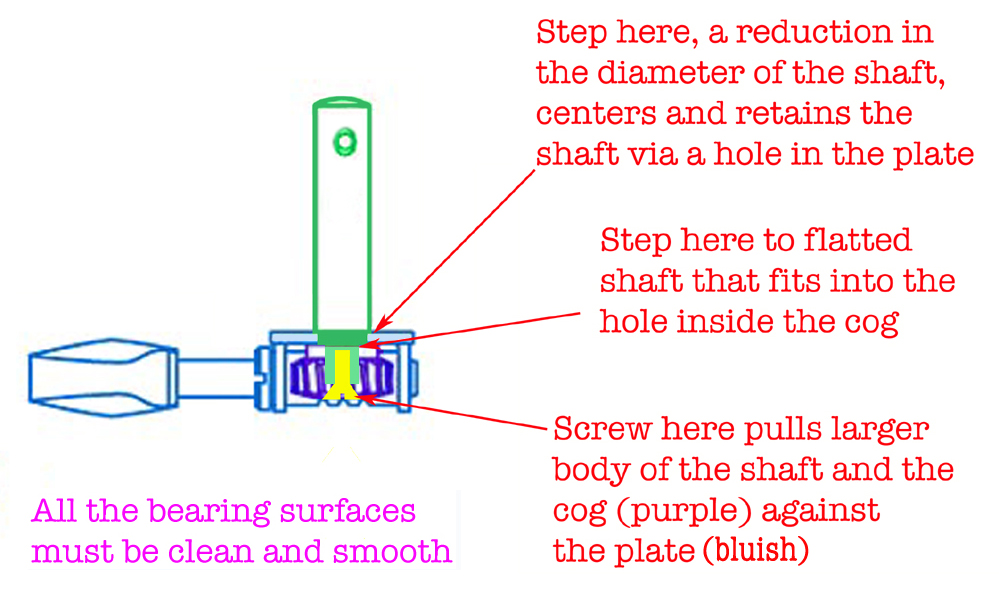
1) simply a matter of needed maintenance and adjustment, covered in the previous page, or:
2) an issue with the instrument that has nothing at all to do with the gears, e.g. friction at nuts and saddles, which can be pursued by clicking here or:
3) mounting and alignment issues, which we'll go into here.
The fundamental issue, in any event, is friction somewhere that is causing the problems. Your task is to identify the point of friction, and take care of it.
Some terminology:
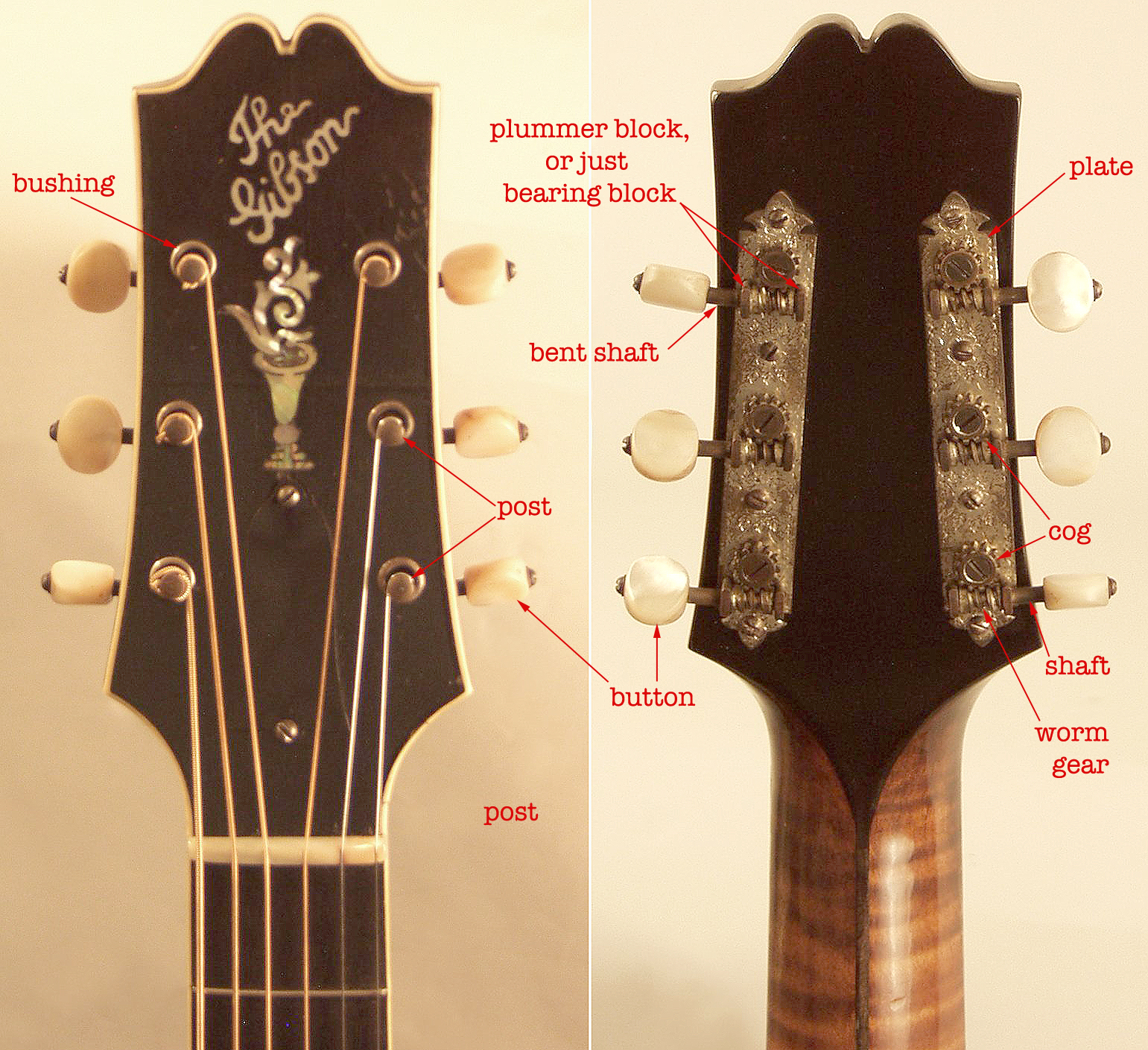
Assuming you have done the whole tuner cleanup I lined out on the previous page, but you find the gears don't function well when they're mounted and under tension, there are a couple of paths to follow...but first:
Eyeball the tuners to see if the entire plate is misaligned with the headstock. Ideally, it should be like this:
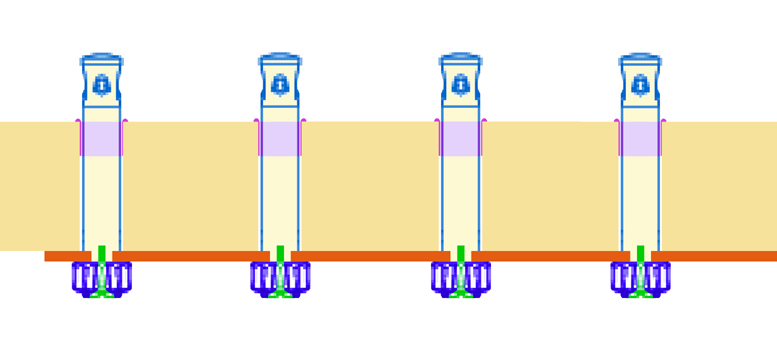
If the shaft spacing is correct, but the whole plate is installed wrong, some or all the shafts could be forced into going through the headstock at an angle which means the metal operative surfaces, any or all of them, could be pinching or binding.
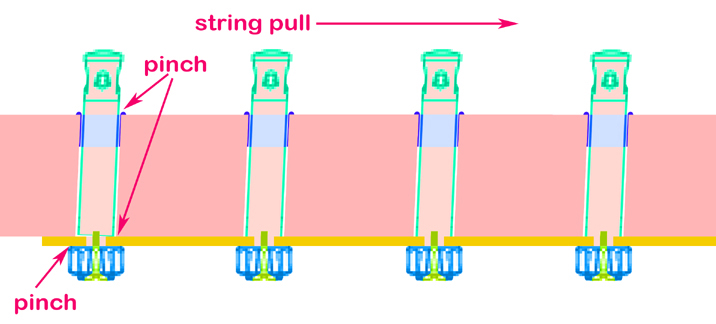
Here's a real-life example:
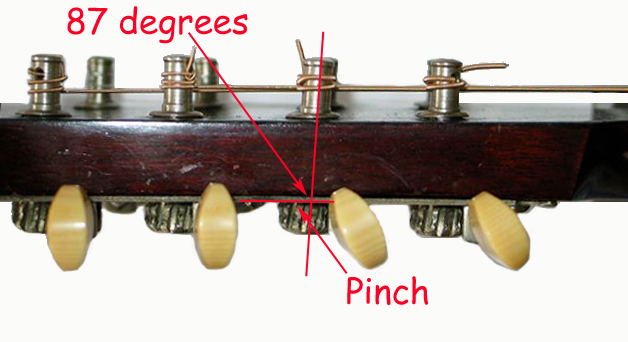
These tuners really didn't work until I moved the plate. By the way, it is typical that misaligned tuners like this will bind harder and harder the higher you tune your string.
Here are a few possible ways to treat the hole through the headstock:
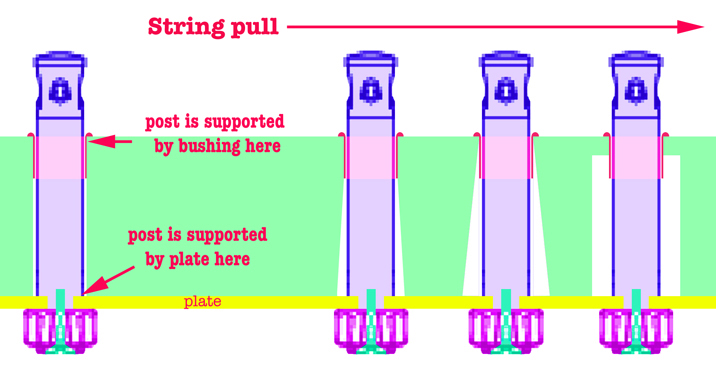
Even if the post spacing is wrong—irregular, unevenly spaced, incorrectly spaced—it will be relatively easy to correct that, and generally invisible as well. The bushings (if you have the perfect original ones, don't lose them!) will almost always cover the problem spot where they were moved from. Filling and redrilling the holes is not rocket science, if it comes to this.
I usually ream the post holes from the back of the headstock with a violin reamer. And it's possible to relocate the bushings to match the post spacing, then adjust the hole, then adjust the position of the plate. The only work the wood in the headstock does is to support the bushing on the face of the headstock. And hold the plate firm, of course.
Here is an example of replacement tuners about to cause more trouble than they were hoping to fix. Notice how they are splayed, not at right angles at all. The original holes were a wee bit farther apart than the new tuners require. Note that the plate is still not touching—because it can't. These tuners will never work, but moving the holes a wee bit closer together, and opening the holes through the headstock from the back, will take care of the problem.
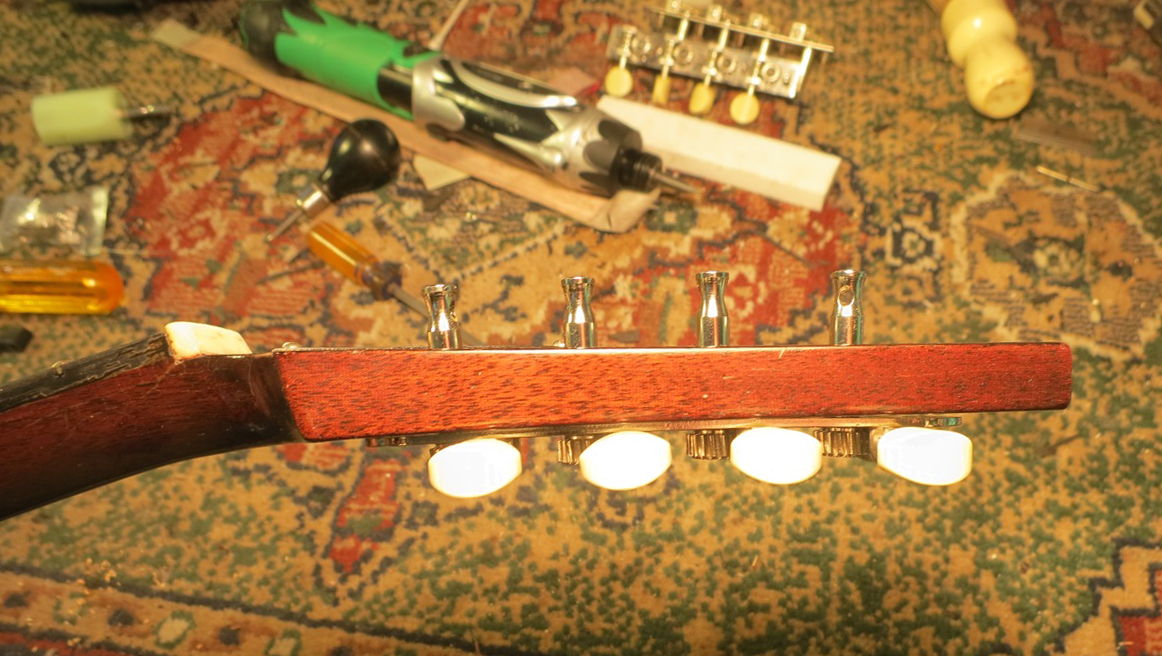
Sometimes a newly installed tuner or two may seem to be inordinately stiff. For example, (on a guitar—this is a common one) the D and G are stiff. Time to follow a flowchart and troubleshoot a bit.
First find out if it's the machine or the mounting:
Plate: If there are isolated stiff ones out of a set on a plate, like the mandolin above, check the alignment. But work the machines when they are off the instrument, to see if it's the machines, or friction issues with how they're mounted. You can usually make this determination by simply turning the button while holding the machine or strip in your other hand. If it's only stiff when it's on the instrument, it's a mounting issue. See above.And if it's a sealed Kluson-type machine, the friction fix is a little more complicated. Let's deal with that right now.
Singles: First, take the problem machine(s) off the guitar and see how it turns when there’s no friction. If they are stiff when they’re not mounted on the headstock, particularly when there’s nothing touching the post, then you have a friction/lubrication issue.
Another test would be to switch the D&G machines for the A&B machines, and see if the issue remains at the upper two tuners, the new D&Gs. That would rule out the machine as the problem.
If it's still stiff when it's off the instrument, you need to go through the procedures as outlined on the previous page.
In the case of Klusons, since you can't realistically open them up, you need to immobilize the strip or single in a small bench vise like this:
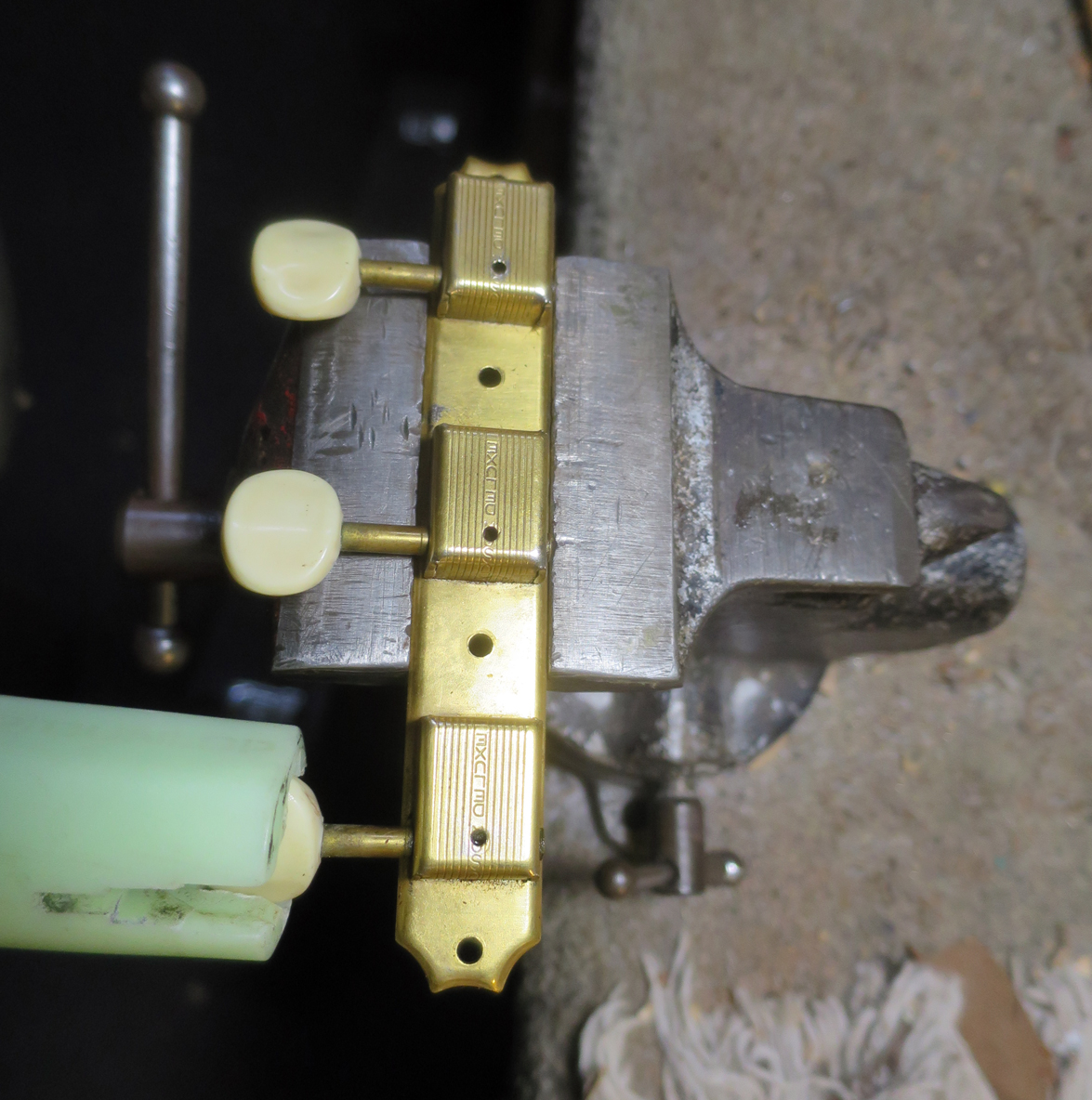
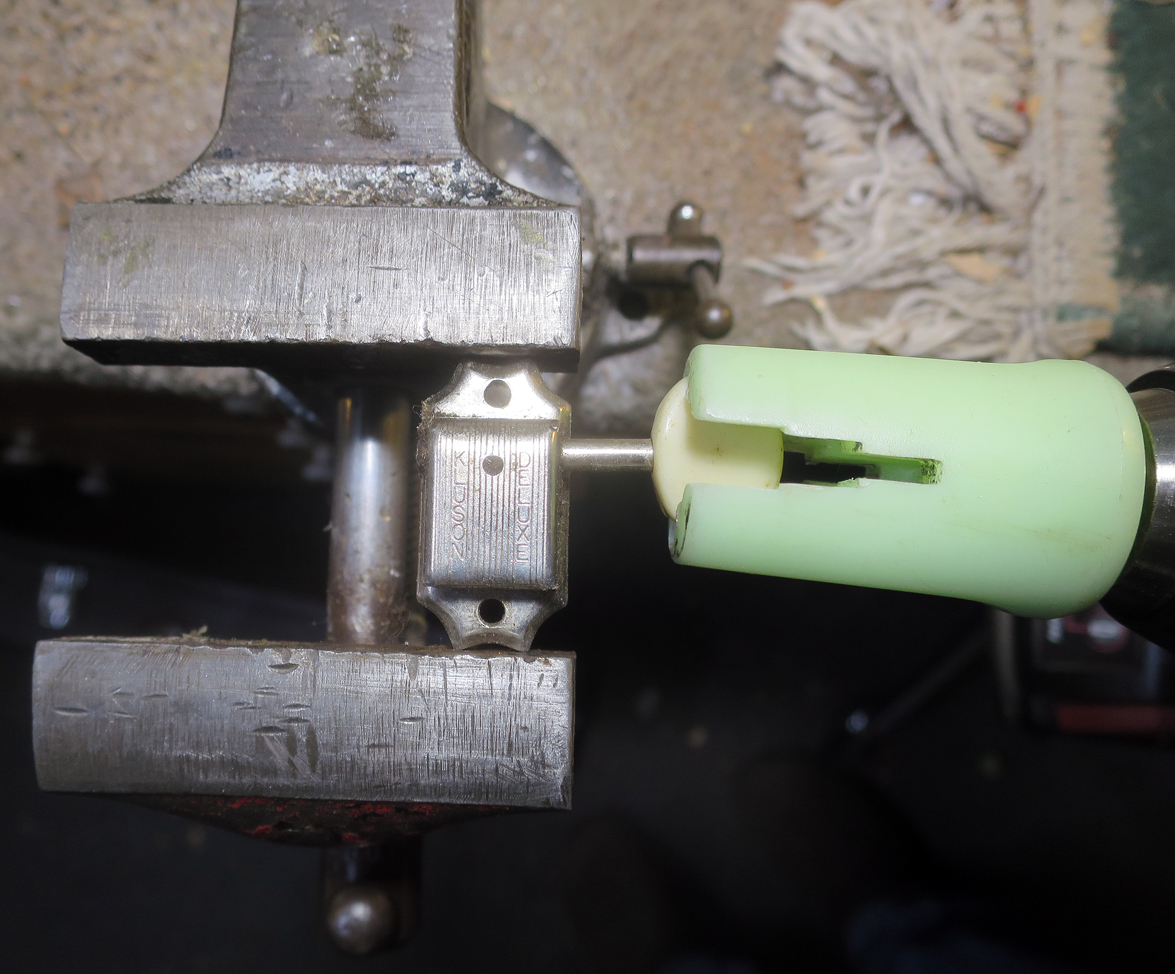
Just
tight enough to hold them—the stamped plates are a bit
fragile. Be careful!
I use my handy glow-in-the-dark stringwinder attachment in a power drill to work the innards of the machine, to work the lube in, and to break them in a bit if they’re new. You should inject lube of some sort through that little hole. As with any tuning machine, these are my preferred lubes: TriFlow (again, see here: tuner.maintenance) or Lubriplate in a syringe. Never use normal petroleum-based oils of any kind. No sewing machine oil, no WD40, no 3-In-1, no baby oil, none of that junk. They will all congeal (polymerize) into a dust-magnet layer of goo.
Lubriplate is especially nice in Klusons because it packs and doesn't run out. But you probably need a special syringe to inject it, as squeezing it from the tube through that little hole is difficult. Only worth bothering with if you expect to do this procedure often. I doubt you will. But either of these are great synthetic greases.
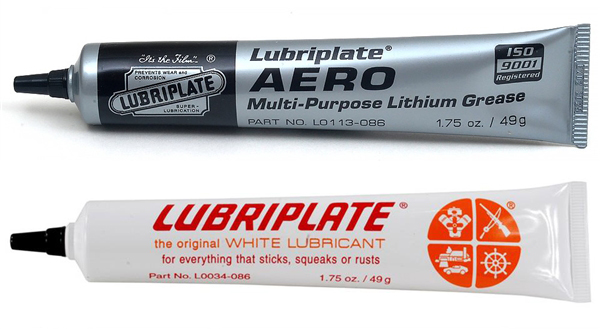
Here's a normal (No Markings!) 3-plate open-gear set in the vise:
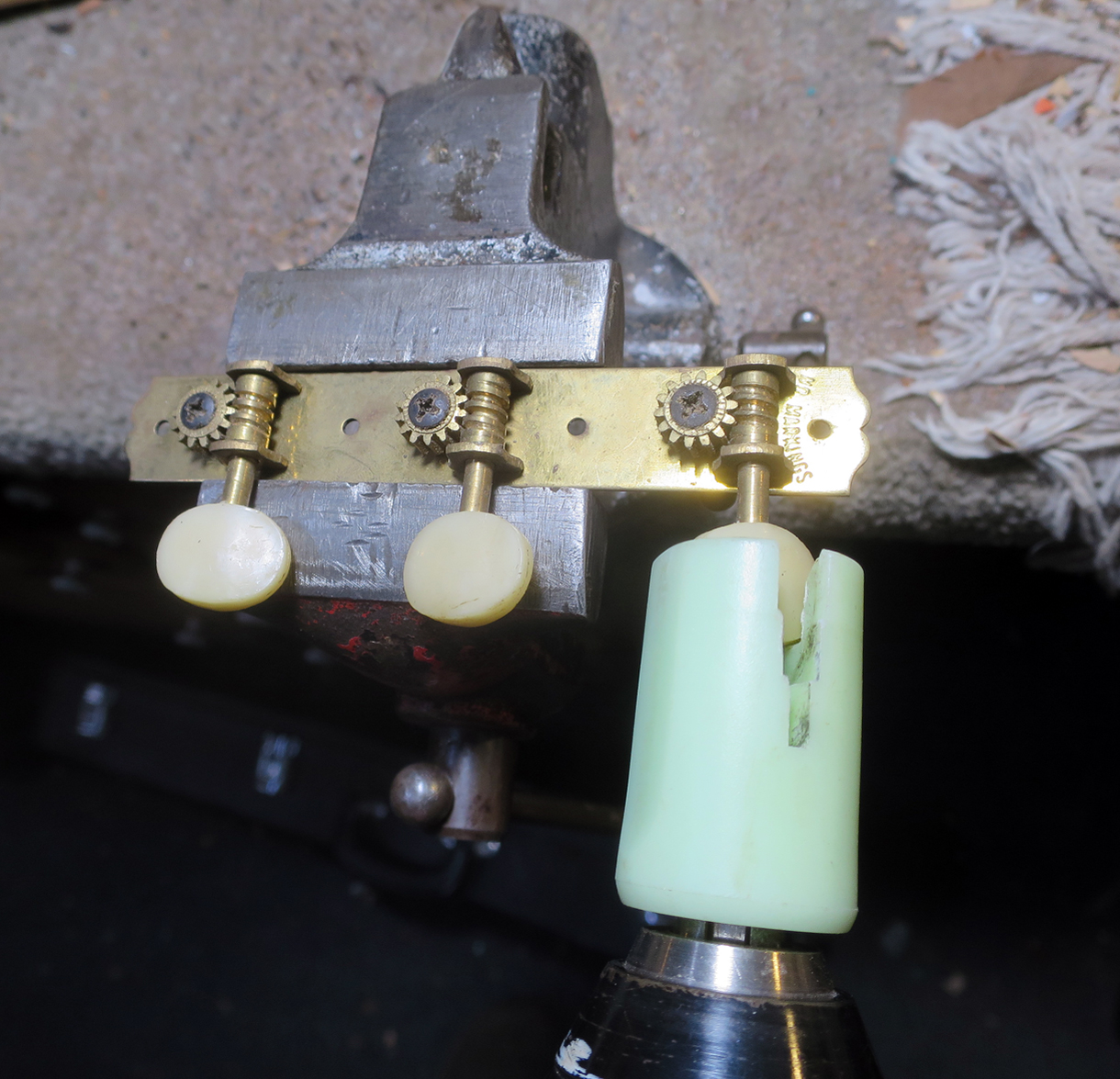
If your tuners are open like these, loosen the tension on the cog a bit, then add a bit of Tri-Flow, and turn the button a few thousand times. If it's a Kluson, get some lube in through that little hole in the housing, and do the same.
More modern sealed tuners like Rotomatics and big Schallers and Gotohs rarely (if ever) have internal friction issues.
If machines are turning well when they're off the instrument, but turn badly when they're mounted, the problem is somewhere in the mounting.
I use my handy glow-in-the-dark stringwinder attachment in a power drill to work the innards of the machine, to work the lube in, and to break them in a bit if they’re new. You should inject lube of some sort through that little hole. As with any tuning machine, these are my preferred lubes: TriFlow (again, see here: tuner.maintenance) or Lubriplate in a syringe. Never use normal petroleum-based oils of any kind. No sewing machine oil, no WD40, no 3-In-1, no baby oil, none of that junk. They will all congeal (polymerize) into a dust-magnet layer of goo.
Lubriplate is especially nice in Klusons because it packs and doesn't run out. But you probably need a special syringe to inject it, as squeezing it from the tube through that little hole is difficult. Only worth bothering with if you expect to do this procedure often. I doubt you will. But either of these are great synthetic greases.

Here's a normal (No Markings!) 3-plate open-gear set in the vise:

If your tuners are open like these, loosen the tension on the cog a bit, then add a bit of Tri-Flow, and turn the button a few thousand times. If it's a Kluson, get some lube in through that little hole in the housing, and do the same.
More modern sealed tuners like Rotomatics and big Schallers and Gotohs rarely (if ever) have internal friction issues.
If machines are turning well when they're off the instrument, but turn badly when they're mounted, the problem is somewhere in the mounting.
Here are two failed attempts at making gears with no slop, as if that was ever needed. The first was an effort by Kluson, during their dying whimper before going out of business in the 1970s. 20:1 ratio, they were awful!:
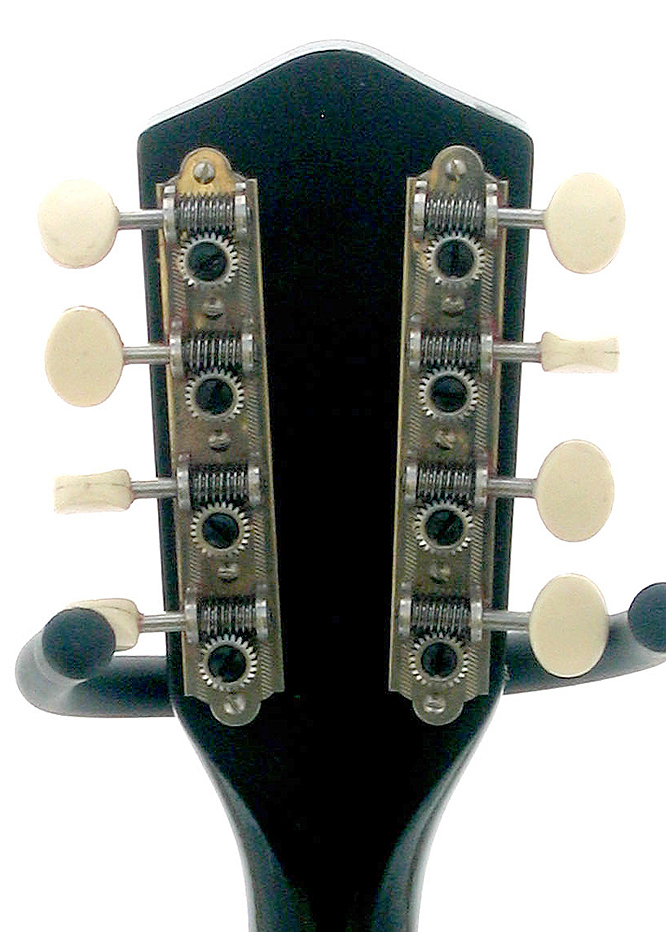
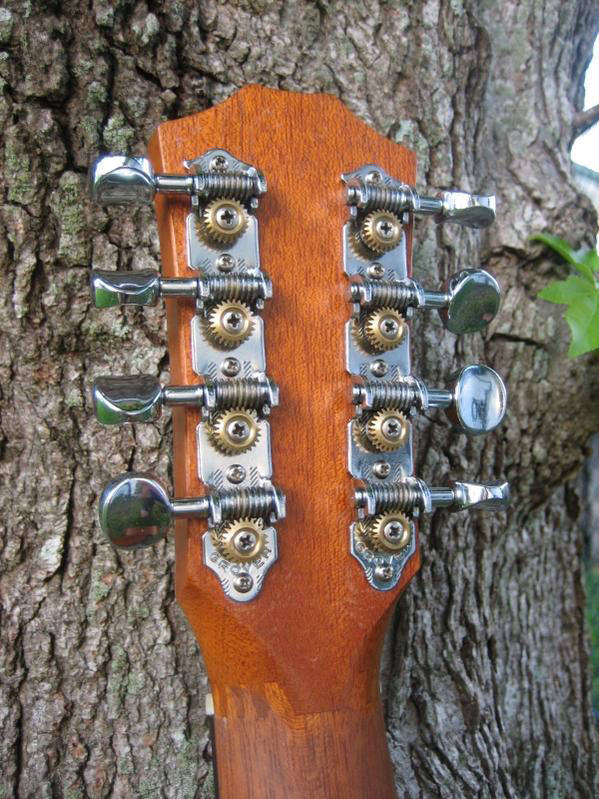
Tons of friction, it took forever to get a string up to pitch. What were they thinking?
I find any machine ratio over 12:1 to be unnecessary.

The previous page to this one, about mandolin gear function and maintenance
More mandolin gear stuff such as mandolin gear direction here
Information about new and old Gotoh mandolin gears here
My home page here and my main lutherie page here and my site map
What more could you want?

This page © 2002 -
2018 Paul Hostetter. All rights reserved.